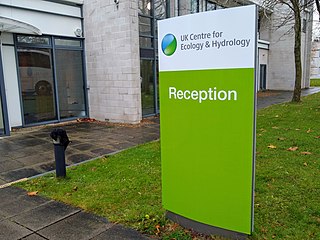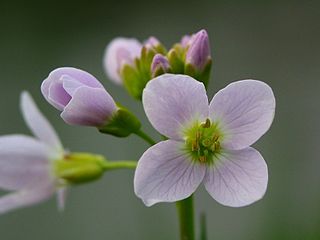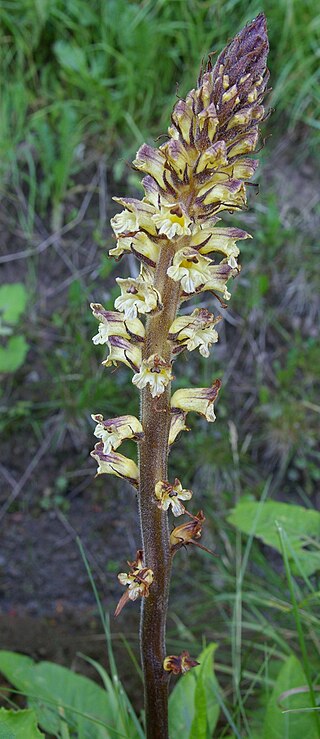Related Research Articles

A vice-county is a geographical division of the British Isles used for the purposes of biological recording and other scientific data-gathering. It is sometimes called a Watsonian vice-county as vice-counties were introduced for Great Britain, its offshore islands, and the Isle of Man, by Hewett Cottrell Watson who first used them in the third volume of his Cybele Britannica published in 1852. Watson's vice-counties were based on the ancient counties of Britain, but often subdividing these boundaries to create smaller, more uniform units, and considering exclaves to be part of the surrounding vice-county.
The Natural Environment Research Council (NERC) is a British research council that supports research, training and knowledge transfer activities in the environmental sciences.
The biodiversity of Great Britain and Ireland is one of the most well-studied geographical areas of its size in the world. This biota work has resulted in the publication of distribution atlases for many taxonomic groups. This page lists these publications.

The UK Centre for Ecology & Hydrology (UKCEH) is a centre for excellence in environmental science across water, land and air. The organisation has a long history of investigating, monitoring and modelling environmental change, and its science makes a difference in the world. The issues that its science addresses include: air pollution, biodiversity, chemical risks in the environment, extreme weather events, droughts, floods, greenhouse gas emissions, soil health, sustainable agriculture, sustainable ecosystems, water quality, and water resources management.

Arabis hirsuta, known as hairy rock-cress, is a flowering plant of the genus Arabis in the family Brassicaceae. In previous North American works, this species has been broadly defined to include plants native to Europe, Asia, and the northern half of North America, but is now more often restricted to a narrower subgroup restricted to Europe.
The National Biodiversity Network (UK) (NBN) is a collaborative venture set up in 2000 in the United Kingdom committed to making biodiversity information available through various media, including on the internet via the NBN Atlas—the data search website of the NBN.

rECOrd is a Local Biological Records Centre (LRC) serving Cheshire, Halton, Warrington and Wirral - 'The Cheshire region'. It provides a local facility for the storage, validation and usage of Cheshire-based biological data under the National Biodiversity Network (NBN) project. It is one of a number of local Biological Records Centres across Britain which together aim to give complete geographic coverage of the UK.

This is a list of topics in biodiversity.

Katherine Jane Willis, Baroness Willis of Summertown, is a British biologist, academic and life peer, who studies the relationship between long-term ecosystem dynamics and environmental change. She is Professor of Biodiversity in the Department of Zoology at the University of Oxford, and an adjunct professor in biology at the University of Bergen. In 2018 she was elected Principal of St Edmund Hall, and took up the position from 1 October. She held the Tasso Leventis Chair of Biodiversity at Oxford and was founding Director, now Associate Director, of the Biodiversity Institute Oxford. Willis was Director of Science at the Royal Botanic Gardens, Kew from 2013 to 2018. Her nomination by the House of Lords Appointments Commission as a crossbench life peer was announced on 17 May 2022.

Potamogeton acutifolius is a European species of aquatic plant in the family Potamogetonaceae, known by the common name sharp-leaved pondweed. It is threatened and declining in at least part of its range.
Biological recording is the scientific study of the distribution of living organisms, biological records describe the presence, abundance, associations and changes, both in time and space, of wildlife. There has been a long tradition of biological recording in the United Kingdom dating back to John Ray (1627–1705), Robert Plot (1640–1696) and their contemporaries.

William James Sutherland is the Miriam Rothschild Professor of Conservation Biology at the University of Cambridge. He has been the President of the British Ecological Society. He has been a Fellow of St Catharine's College, Cambridge since 2008.
Franklyn Hugh Perring PhD, OBE was a British naturalist, regarded as "one of the most influential botanists and nature conservationists of the 20th century".

Hieracium naviense is a very rare species of hawkweed which has been given the common name of Derby hawkweed.

Salix repens, the creeping willow, is a small, shrubby species of willow in the family Salicaceae, growing up to 1.5 metres in height. Found amongst sand dunes and heathlands, it is a polymorphic species, with a wide range of variants. In the UK, at least, these range from small, prostrate, hairless plants at one end of the spectrum to taller, erect or ascending silky-leaved shrubs at the other. This wide variation in form has resulted in numerous synonyms.
Helen Elizabeth Roy, is a British ecologist, entomologist, and academic, specialising in aphids and non-native species. Since 2007, she has been a principal scientist and ecologist at the NERC's Centre for Ecology & Hydrology. From 1997 to 2008, she taught at Anglia Ruskin University, rising to the rank of Reader in Ecology. She is the co-organiser of the UK Ladybird Survey, alongside Dr Peter Brown, is a visiting professor in the School of Biological Sciences, University of Reading and is a past President of the Royal Entomological Society.
Jane Memmott Hon.FRES is an ecologist and entomologist from the United Kingdom. She is professor of ecology at the University of Bristol. Her research focuses on community ecology and she is an expert on the interactions between insect pollinators and plants.

Orobanche reticulata is a species of broomrape known by the common name thistle broomrape. It is a parasitic plant whose host is normally the creeping thistle. It is native to the lowlands of Western Europe and Central Asia, but in the United Kingdom it is a rare and protected plant, growing only in Yorkshire, on grassland sites such as Quarry Moor.

Rumex rupestris, commonly known as shore dock, is a species of flowering plant belonging to the family Polygonaceae. Its native range is Western Europeand is one of the world's rarest dock species.
Bridget Emmett is a British ecologist, Professor and Science Area Head for the UK Centre for Ecology & Hydrology. She is the President of British Ecological Society from 2024.
References
- 1 2 3 Roy, Helen E.; Preston, Christopher D.; Roy, David B. (July 2015). "Fifty years of the Biological Records Centre". Biological Journal of the Linnean Society. 115 (3): 469–474. doi: 10.1111/bij.12575 .
- ↑ Perring, Franklyn; Walters, Max (1993). Atlas of the British flora (3. ed., repr. ed.). [London]: Botanical Society of the British Isles. ISBN 978-0-901158-19-2.
- ↑ Preston, Christopher D. (April 2013). "Following the BSBI's lead: the influence of the Atlas of the British flora, 1962-2012" (PDF). New Journal of Botany. 3 (1): 2–14. doi:10.1179/2042349713Y.0000000020. S2CID 55694686.
- ↑ Centre for Ecology and Hydrology (2015-11-27). "Biological Records Centre" . Retrieved 10 February 2016.
- ↑ Pocock, Michael J. O.; Roy, Helen E.; Preston, Chris D.; Roy, David B. (July 2015). "The Biological Records Centre: a pioneer of citizen science". Biological Journal of the Linnean Society. 115 (3): 475–493. doi: 10.1111/bij.12548 .
- ↑ "Biological Records Centre - Recording Schemes". Biological Records Centre. Retrieved 2013-09-19.
- ↑ Biological Records Centre. "Atlases" . Retrieved 10 February 2016.
- ↑ Biological Records Centre. "Datasets" . Retrieved 10 February 2016.
- ↑ Biological Journal of the Linnean Society115 (3), Pages 469–784. July 2015.
- ↑ Burnett, J., Copp, C., Harding, P. (1995) Biological Recording in the United Kingdom Present practice and future development Summary Report, Coordinating Commission for Biological Recording available from download from Natural Environment Research Council
- ↑ The Natural History Record Bureau at the Carlisle Museum, The Museums Journal 10 (6). December 1910.
- ↑ "History | CBDC". Cumbria Biodiversity Data Centre, Tullie House Museum. Accessed 2013-09-19.
- ↑ Running a Local Record Centre, The Wildlife Trusts/NBN. 2001.